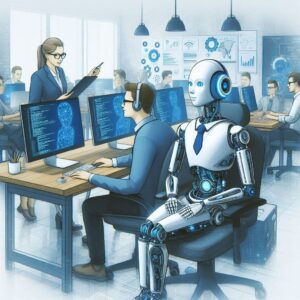There are five types of AI agents —Simple Reflex Agents, Model-based Reflex Agents, Goal-based Agents, Utility-based Agents, and Learning Agent
Simple Reflex Agents:
These are the most basic form of AI agents. They simply respond to stimuli with predefined rules without considering past actions or future consequences. Their decision-making is based on the current state or observation alone.
Example: A robot vacuum that starts cleaning when it detects dirt, or a smart thermostat adjusting temperature when it detects a change in room temperature.
Model-based Reflex Agents:
These agents improve upon the Simple Reflex Agents by maintaining an internal model of the world (i.e., they have memory). They can keep track of their environment and past states, which allows them to make better decisions when the current state is not enough.
Example: A robot navigating through a maze by remembering where it has already been to avoid retracing steps or getting stuck.
Goal-based Agents:
Goal-based agents take their goals into consideration and plan their actions based on the objective they want to achieve. They reason about which actions will bring them closer to their goals and are capable of exploring different paths to achieve them.
Example: A navigation system for a self-driving car that plans the route from point A to point B, considering possible obstacles, traffic conditions, and the shortest path.
Utility-based Agents:
These agents go beyond just achieving a goal and focus on maximizing utility, which means they will try to make decisions that yield the highest possible satisfaction or benefit. A utility-based agent assigns a value (utility) to different states, and its goal is to maximize this value.
Example: An autonomous drone making decisions about where to go next based on a utility function that might consider speed, battery life, and safety to find the optimal flight path.
Learning Agents:
Learning agents are capable of improving their performance over time by learning from experience. They adapt to new situations and data, allowing them to evolve and become better at their tasks. These agents learn through trial and error, adjusting their behavior based on feedback.
Example: A recommendation system (like on Netflix or Amazon) that learns what content you like based on your previous choices and user behavior, and recommends new movies or products accordingly.
Summary:
- Simple Reflex Agent: Reacts based on immediate observations (no memory).
- Model-based Reflex Agent: Uses memory to handle more complex scenarios.
- Goal-based Agent: Focuses on achieving specific goals and plans accordingly.
- Utility-based Agent: Optimizes decisions based on maximizing utility, not just achieving goals.
- Learning Agent: Learns from past actions and feedback to improve its performance.


